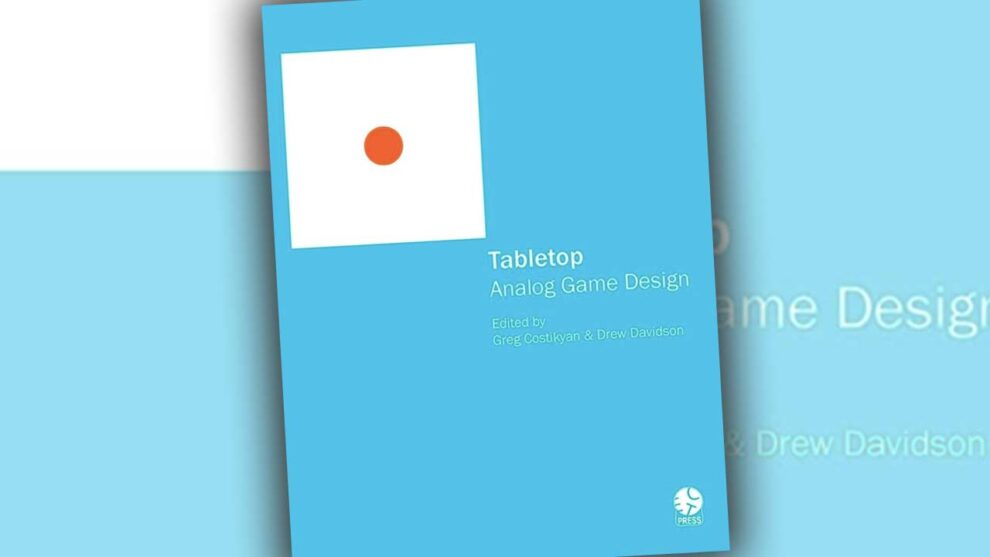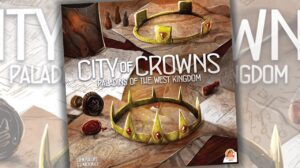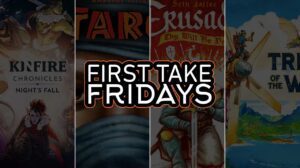Tabletop Analog Game Design (lulu.com, 2011), edited by Drew Davidson and Greg Costikyan, is a collection of essays about game design and board game analyses, with each chapter written by a different writer with his own perspective on gaming and design.
The book is divided into three sections: Designing Tabletop Games, Game Analyses, and The Study of Tabletop Games. Let’s take a look at each one:
Designing Tabletop Games starts with an article by Lewis Pulsipher (designer of many Diplomacy variants, Dragon Rage, and Britannia) on the problems that arise when games move from two players to three. His in-depth analysis of the specific problems of 3+ player games presents a fine job of preparing the reader for the in-depth consideration with which the book deals with its subject matter.

Other chapters in this section include essays on game design simulations, thoughts on the implications of randomness in your games, the role dice can play in building a game’s outcome and storyline, modern considerations, and choices for producing a prototype game. There is also a far too short chapter on the simplicity of many of Dr. Reinier Knizia’s game designs, especially regarding the depth and replayability of these games.
The Game Analysis section of the book starts with chapters on the design aspects of Settlers of Catan that made it so successful. This is followed by Peter Olotaks, designer of Cosmic Encounters who writes on the development of the rules behind his game. From there the section moves into chapters devoted to specific games—Pandemic,
Poker, Ra, and Twilight Struggle—detailing what makes these games compelling and what designers can learn from them to make future games better.
The final section, The Study of Tabletop Games, contains three essays: the first uses Settlers of Catan as a way to understand IF >> THEN programming statements while the second chapter attempts to describe the aesthetics of Abstracts, Wargames, Eurogames, and Ameritrash (Editior/Author Costikyan’s term). The final chapter, written by the director of the Carnegie Mellon University’s Entertainment Technology Center (ETC, the book’s publisher) on the link between Improvisational Acting and Game Design.
Two chapters in Tabletop: Analog Game Design stand out enough to make it worth the effort to track down this book.
The first of these is The Greatest Gift by Ray Mazza. (Designer of Vainglory and Merge Dragons, as well as engineer/designer/creative director for many of the Sims games since 2004) Here Mazza provides a well thought-out step-by-step guide for designing games starting with Brainstorming and moving through Goal Definitions to Starting Places (Mechanic, Theme, or Play Style) through play testing and troubleshooting to make the game ready for production. This mini-course in creating the backbone of any game condensed much of the reading on board game design that I have done in the past few years into a simple, easy to follow approach to design work.
Stone Librande, the designer behind the board game Mechs vs Minions, and the videogames SimCity and Diablo 3 has the longest chapter in the book. Thankfully, it’s one of the most engaging as well. When his firstborn son was two years old Librande decided to make a game to play with his son on Christmas Day. That started a tradition of “the Christmas Game”, a new game designed and created by Librande for his family each year. As his son grew up, not only did the games need to become more complex but, the game design and production process followed suit. Instead of spending a week or two on a game, as the years progressed, he began spending months on them.
What makes Librande’s chapter stand out are the insights into each of the fifteen game designs. Each game was intentionally different, both in theme and components; each game was designed around a specific set of criteria (time to create, gameplay time and space, competing interests, etc.); each game had to meet the rising sophistication and expectations of his family. This annual challenge and evolutionary game design process should impress any aspiring game designer.
Overall, Tabletop Analog Game Design is a somewhat uneven collection of essays. The handful of misses, however, are more than made up for by the articles that were so engaging as to make me want to start sketching out game design ideas then and there.
If you’re a game designer or want to be a game designer, this is a book worthy of your time.











Add Comment